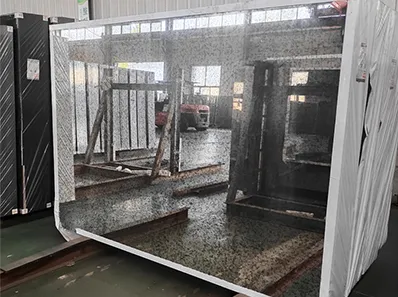Nov . 27, 2024 14:48 Back to list
Understanding the Distinctions between Regular Glass and Tempered Glass for Various Uses
The Difference Between Regular Glass and Tempered Glass
Glass is a material widely used in various applications, from windows and doors to furniture and décor. Among the different types of glass, regular glass and tempered glass are the most commonly referenced. While they may appear similar at first glance, there are significant differences between the two, particularly in terms of durability, safety, and usability. Understanding these differences is crucial for anyone considering glass for construction, design, or everyday use.
Regular Glass
Regular glass, also known as annealed glass, is manufactured through a process of heating raw materials like silica, soda ash, and limestone until they melt and fuse together. Once this mixture cools, it forms solid glass. The main characteristic of regular glass is its inherent vulnerability. It can crack or shatter easily under stress, heat variations, or impact. This fragility means that regular glass is often unsuitable for high-stress environments, as it lacks the strength required to withstand forces that could cause it to break.
The manufacturing process of regular glass also means it can have imperfections, such as bubbles or distortions. Although it can be cut and shaped easily, its inability to withstand thermal stress leads to practical limitations in its applications. Regular glass is commonly used in situations where safety is not a major concern, such as picture frames, decorative items, and non-load-bearing windows.
Tempered Glass
On the other hand, tempered glass is designed for strength and safety. The production of tempered glass involves a secondary step known as thermal tempering. After the glass is formed, it is heated to over 600 degrees Celsius (about 1112 degrees Fahrenheit) and then rapidly cooled. This process alters the glass's internal structure, making it much more durable and able to withstand significant forces better than regular glass.
what is the difference between regular glass and tempered glass

One of the most significant advantages of tempered glass is its safety features. When shattered, tempered glass breaks into small, blunt pieces instead of sharp shards, reducing the risk of injury. This quality makes tempered glass an ideal choice for applications where safety is paramount, such as shower doors, glass doors and tables, and automotive windows.
Additionally, tempered glass is more resistant to thermal stress. It can handle sudden changes in temperature without breaking, making it suitable for scenarios where heat fluctuations are common, such as in fireplace glass or glass cooktops. Its enhanced durability allows it to be used in load-bearing applications, an area in which regular glass would not be viable.
Applications and Cost
The difference in strength, safety, and thermal resistance also leads to differences in application and cost. Regular glass is often less expensive than tempered glass, making it a practical choice for everyday items that do not require extraordinary durability or safety. In contrast, tempered glass generally costs more due to its complex manufacturing process and the safety features it provides.
Common applications for regular glass include residential windows, mirrors, and various household decorative items. Tempered glass, being the preferred choice for high-traffic or high-risk areas, is often utilized in commercial buildings, high-rise apartments, and any setting where public safety is a consideration.
Conclusion
In summary, while both regular glass and tempered glass serve essential roles in our daily lives, they cater to different needs and specifications. Regular glass is suitable for low-risk applications due to its cost-effectiveness and ease of use, whereas tempered glass excels in safety, strength, and versatility in high-stress environments. When choosing between the two, it is vital to consider the intended application, potential risks, and relevant safety standards to ensure the right type of glass is used for the task at hand.
-
Safety and Style with Premium Laminated Glass Solutions
NewsJun.24,2025
-
Reinvents Security with Premium Wired Glass
NewsJun.24,2025
-
Premium Float Glass Line for Modern Architecture
NewsJun.24,2025
-
Low Emissivity Glass for Energy-Efficient Architecture
NewsJun.24,2025
-
High-Performance Insulated Glass Solutions for Modern Architecture
NewsJun.24,2025
-
Elevates Interior Style with Premium Silver Mirror
NewsJun.24,2025
Related PRODUCTS














